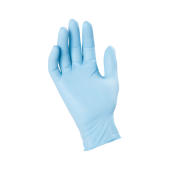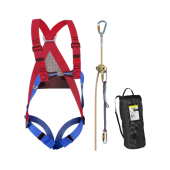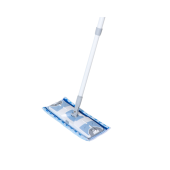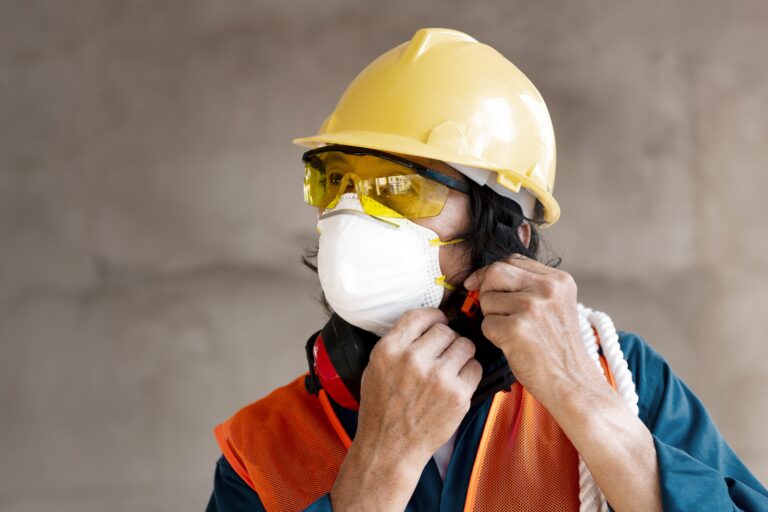Construction workwear is an essential aspect of ensuring safety and productivity on the job. That’s why providing your construction workers with the appropriate personal protective equipment (also known as PPE) enables them to perform their duties with a reduced risk of injury, ensuring a safer and more efficient work environment.
Moreover, as the construction industry continues to evolve and grow, it becomes increasingly vital for employers and workers to prioritise the use of suitable construction workwear that meets the highest safety standards.
In this guide, we will delve into the numerous facets of construction workwear, examining the specific types of PPE necessary for construction workers, and discussing the importance of each item in protecting workers from various hazards.
This guide will cover:
- High visibility clothes
- Hard hats
- Work boots and safety work shoes
- Safety work gloves
- Fall protection equipment
- Other essential construction safety gear

High-visibility clothes for construction workers
High-visibility clothes are a critical component of construction workwear, significantly improving workers’ visibility in low-light conditions or bustling work environments, thus mitigating the risk of accidents.
These garments typically boast vivid colours, such as fluorescent yellow or orange, coupled with reflective strips that enhance visibility in dimly lit settings. For instance, high-visibility clothes can make a significant difference when working on busy motorways, large construction projects, or close to heavy machinery.
A diverse range of high-visibility clothes is available on the market, including jackets, vests, and pants.
When selecting suitable high-visibility clothes for your workforce, consider factors such as the work environment, weather conditions, and specific tasks being undertaken.
For example, waterproof high-visibility clothing is essential for outdoor construction sites where rainfall is frequent, while breathable options are more appropriate for indoor projects or warmer climates.
Additionally, when it comes to safety vests you should always consider pockets.
Safety vests with pockets provide a practical and convenient solution for construction workers, as they not only enhance visibility, but also offer easy access to essential tools, equipment, and personal items, thereby improving efficiency on the job.
For instance, in large-scale construction projects involving heavy machinery or working alongside busy roadways, safety vests with pockets allow workers to keep essential tools and communication devices close at hand, reducing the need for unnecessary trips back and forth. This not only saves time but also minimises exposure to potential hazards.

Hard hats for construction workers
Head protection is crucial in a construction site where falling objects, low ceilings, and other hazards can lead to severe injuries.
Hard hats for construction workers are specifically designed to absorb impacts, provide a comfortable fit, and ensure the head remains secure during various tasks.
These protective helmets come in a range of styles and materials, featuring suspension systems that evenly distribute weight across the head, reducing pressure points and enhancing comfort during long working hours.
To choose the right hard hat for your team, consider factors such as the work environment, potential hazards, and compliance with relevant safety standards.
For example, construction workers involved in large-scale projects, like high-rise buildings, may face increased risks of falling objects, while those working in confined spaces may require hard hats with low-profile designs to prevent injuries from low ceilings. Moreover, workers in the electrical sector might need hard hats that provide electrical protection, adhering to specific safety standards.
Regular inspection and maintenance of hard hats are essential to ensure optimal protection over time. This includes checking for any visible signs of wear, cracks, or other damage, as well as assessing the integrity of the suspension system.




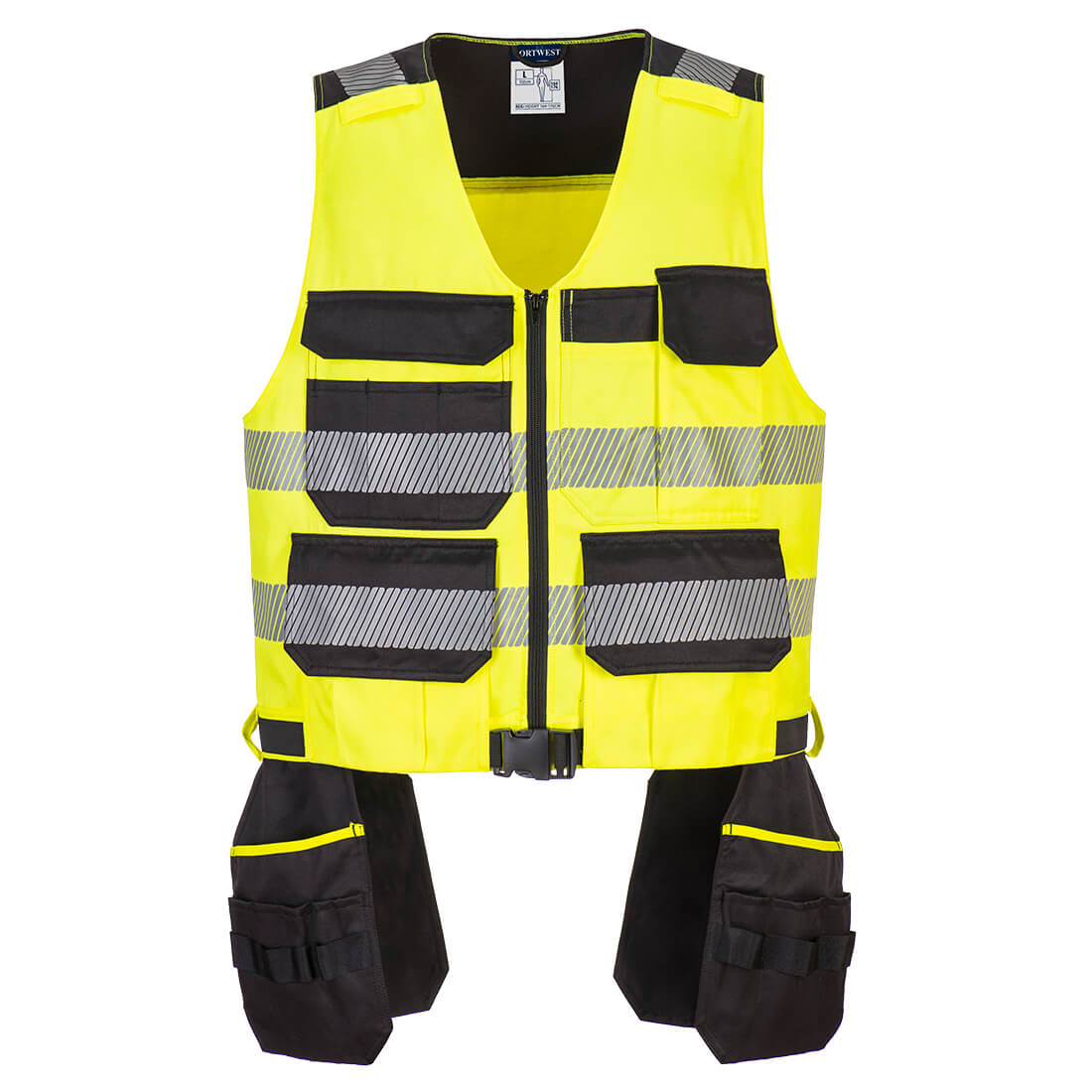
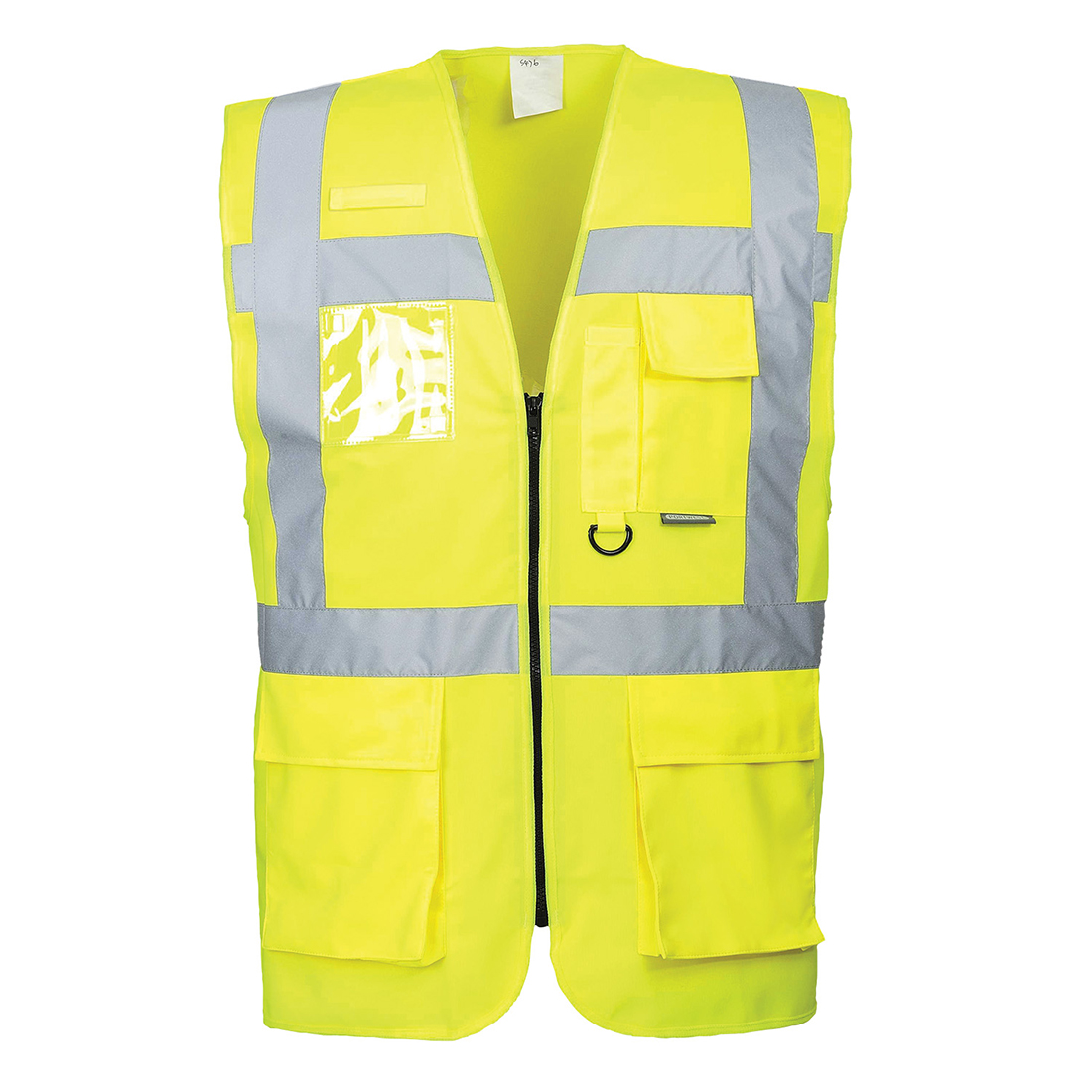
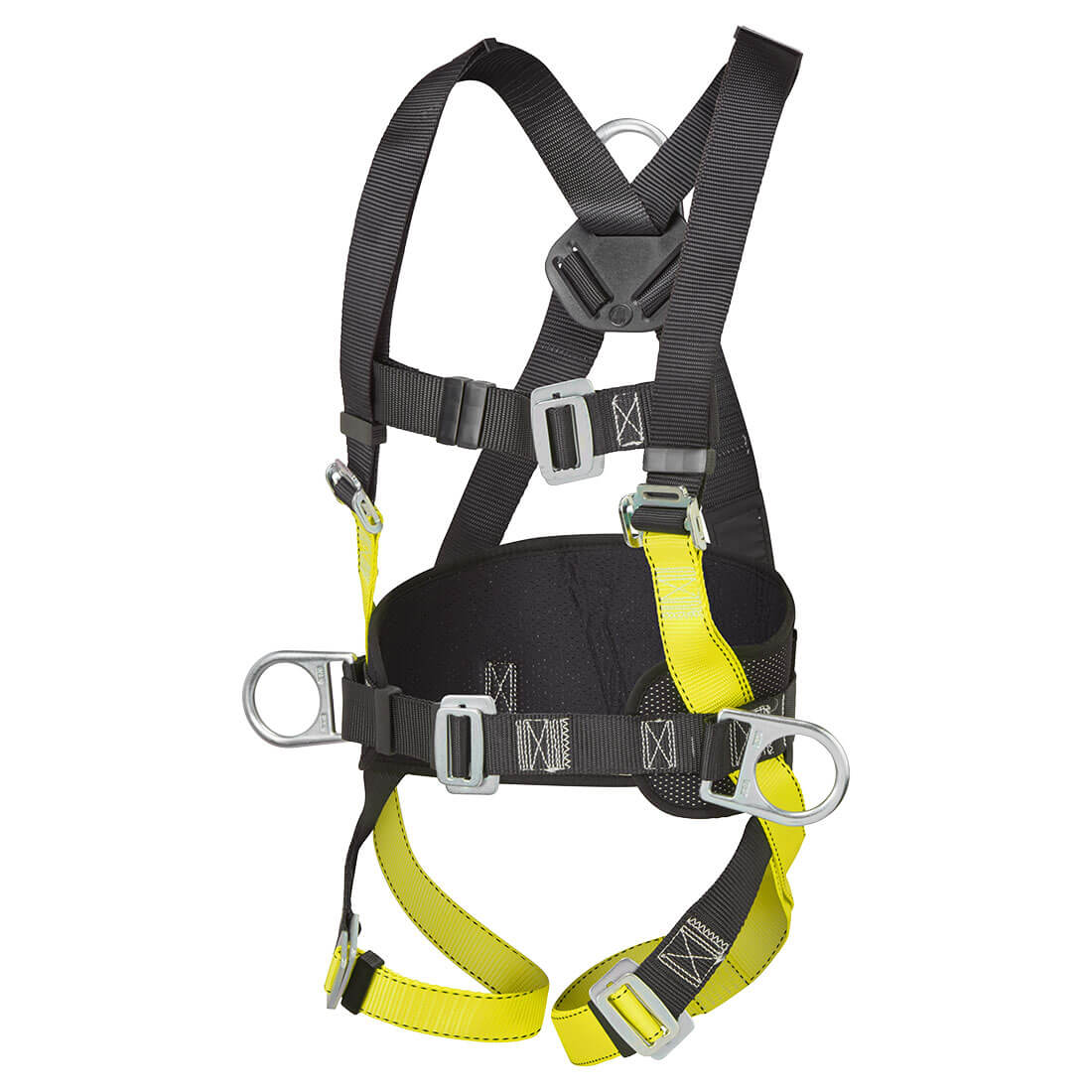
Work boots and safety shoes for construction workers
Quality work boots provide support, durability, and protection against hazards such as heavy objects, sharp materials, and slippery surfaces commonly encountered on construction sites.
Key features to look for in construction work boots include steel or composite toe caps for protection against impact and crushing hazards, puncture-resistant soles to shield against sharp objects, and slip-resistant outsoles to reduce the risk of falls on slippery or uneven surfaces.
For instance, workers involved in the construction of large infrastructure projects, such as bridges or tunnels, may face hazards from falling debris, sharp rebar, and slippery surfaces. In these cases, work boots with the aforementioned features can significantly mitigate the risk of foot injuries.
On the other hand, construction safety shoes provide an alternative to work boots, offering a lighter and more flexible design suitable for construction workers who require foot protection without the extra support and weight of traditional work boots. These safety shoes are ideal for construction workers engaged in tasks where increased mobility is vital or when working in environments with fewer hazards.
For example, construction workers who primarily operate indoors, such as electricians or carpenters, may find safety shoes more appropriate for their tasks, allowing for greater ease of movement without compromising protection.
Safety work gloves for construction workers
Safety work gloves form an integral part of construction workwear, providing essential protection for workers’ hands against cuts, abrasions, burns, and various other hazards commonly encountered on construction sites.
The market offers a vast array of safety gloves, each tailored to specific tasks and offering different levels of protection to suit the unique demands of the construction industry.
You can learn everything about safety gloves for construction workers in our blog post: Buying Construction Gloves: A Guide to Cut, Chemical, and Impact Resistance
All in all, when selecting construction gloves, you need to consider factors such as grip, dexterity, and durability to ensure that workers can perform their tasks effectively and safely.
For instance, workers handling sharp materials may require cut-resistant gloves, while those working with chemicals may need gloves offering chemical resistance. Dexterity is vital for tasks requiring precision and fine motor skills, such as wiring or carpentry. Finally, durability is another key factor, as gloves must withstand the rigours of daily construction work.
Fall protection equipment for construction workers
Fall protection equipment which includes harnesses, lanyards, anchor points, and other devices, is specifically designed to prevent or minimise the impact of falls in high-risk environments.
To ensure the highest level of safety, you need to conduct a thorough risk assessment before selecting fall protection equipment. This assessment should identify potential hazards, such as unstable platforms or unprotected edges, and determine the most appropriate gear for the specific task being performed.
Proper training is also critical, as your workers must be knowledgeable about the correct usage, maintenance, and storage of fall protection equipment. For example, they should be trained on how to correctly don and adjust their harnesses, inspect lanyards for wear and tear, and select appropriate anchor points to maximise safety.
Finally, regular inspections of fall protection gear are also necessary to identify any signs of damage or degradation that could compromise its effectiveness. For instance, harnesses should be checked for frayed webbing, broken buckles, or worn stitching. Maintenance, such as cleaning and repairs, should be carried out as needed to extend the equipment’s lifespan and maintain optimal performance.
Other essential construction safety gear
In addition to the construction workwear items previously discussed, several other essential safety gear pieces should be considered for comprehensive protection on construction sites:
- Safety goggles or glasses: These protect workers’ eyes from dust, debris, and flying particles, shielding them from potential eye injuries and maintaining clear vision.
- Hearing protectors: Earplugs or earmuffs are necessary in noisy environments, as they help prevent hearing damage and reduce the risk of long-term hearing loss.
- Respiratory protection: Masks and respirators are vital for protecting workers from inhaling harmful substances, such as dust or chemical fumes. You can read everything on safety masks and respirators for construction workers in our previous blog post: Choosing the Right Construction Face Mask: A Guide for Sanding, Concrete Dust, and More
- Protective coveralls: They safeguard workers from spills, splashes, and exposure to hazardous materials. These garments should be chosen according to the specific tasks and hazards encountered on the job site.

Conclusion
All in all, sourcing and buying the right construction workwear for your construction site and use cases is critical to the safety and productivity of your team.
By equipping your construction workers with the right PPE, including high visibility clothes, safety vests with pockets, work boots, hard hats, safety shoes, gloves, and fall protection equipment, you can create a safer and more efficient work environment.
Next, you can browse our full catalogue of personal protective equipment from Europe’s top-trusted PPE suppliers. If you’re not sure what’s the best fit for your use cases, do not hesitate to get in touch with our product experts!





